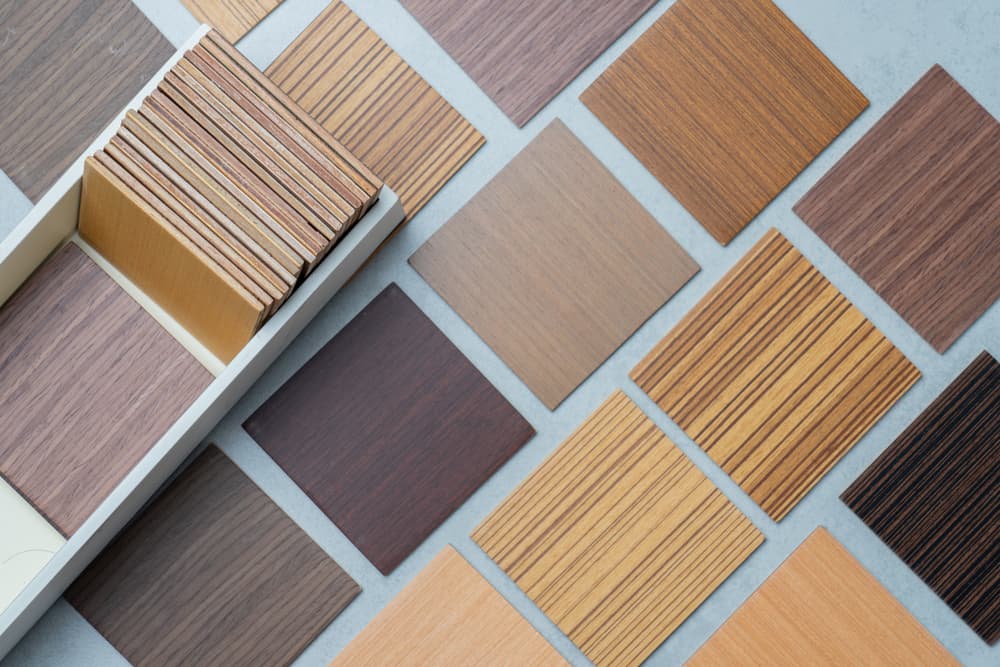When selecting wood veneers and laminate casegoods for hotels, offices, or other commercial spaces, it’s essential to understand their durability, aesthetics, and cost-effectiveness. These materials are widely used in the hospitality industry, offering a balance between luxury, functionality, and sustainability.
Both wood veneer furniture and laminate casegoods are popular choices for custom hotel casegoods, but each comes with its unique advantages. Knowing the differences between wood veneer vs laminate casegoods helps hotel owners and interior designers make informed decisions that enhance guest experience and long-term maintenance efficiency.
This article explores the benefits, durability, and applications of wood veneers and laminate casegoods in hospitality and commercial environments.
Table of Contents
Toggle- What Are Wood Veneers and Laminate Casegoods?
- Wood Veneer vs. Laminate Casegoods: Which Is Better?
- Why Hotels and Businesses Prefer Wood Veneers and Laminate Casegoods
- Final Thoughts: Selecting the Best Wood Veneers and Laminate Casegoods
- The Advantages of Custom Luxury Hotel Furniture
- The Importance of Custom Hotel Furniture in Enhancing Guest Experience
- The Ultimate Guide to Finding Top Hotel Furniture Suppliers in Turkey
- Importance of High Quality Furniture in Hotels
- The Impact of Furniture Design on Hotel Guest Experience
- High Quality Furniture in Hotels: Essential for Guests
- The Role of Furniture in Defining Hotel Aesthetics
- The Evolution of Hotel Furniture Design Over the Years
- How to Choose the Right Upholstery for Hotel Furniture
- The Impact of Furniture Design on Guest Experience in Hotels
- Hotel Furniture and Design: Enhancing the Guest Experience
- Premium Hotel Furniture in Turkey: Elevate Your Hotel’s Interior Design
- How Do Hotels Get Furniture in the Rooms | Hotel Solutions
- Hotel Furniture Concept | Perfect Products for Your Hotel
- Top 5 Benefits of Turkish Made Hotel Furniture
- What makes a good faux leather?
- Furnishing an Apartment: 6 Tips for Choosing the Best Furniture
- Types Of Hotel Furniture You Need
- Why Turkish Made Hotel Furniture is the Best Choice for Your Business
- What is fixed furniture?
- Maximizing Your Hotels ROI with High-Quality Furniture Solutions
- Benefits of Custom Made Furniture
- Hotel Furniture Buying Guide
- Where Do I Buy Hotel Furniture in Turkey?
- How to Make a Hotel Room Feel Like Home
- How Often Do Hotels Change Their Interiors?
- A Good Hotel Furniture Manufacturer
- 7 Signs Your that Hotel Needs Renovation
- What Factors Will Affect Hotel Furniture Prices?
- Should I Buy Laminate or Veneer Furniture?
- MDF Cutting Machine
- What are the Basic Furniture Required to Set Up a Hotel?
- What is Crib 5?
- Four Ways to Maintain Hotel Room Storage
- Characteristics of a Custom Hotel Furniture
- Popular Materials for Luxury Hotel Furniture Manufacture
- The Four Characteristics of a Hotel Furniture Design
- 4 Key Considerations for Hotel Furniture
- Hospitality Design Mistakes That Are Common
- Hotel Furniture Quality Control Checklist
- Things Your Hotel Furniture Manufacturer Should Provide
- Why we use 3D Renderings in Furniture Design
- Advantages of Custom Hotel Furnitures
- Important Questions to Ask a Potential Hotel Furniture Supplier
- What Are the Guides to Contract Furniture?
- Things to Consider When Choosing a Hotel Furniture Manufacturer
- Wooden Furniture Care
- What Types Of Wood Are The Best For Your Luxury Sofa?
- Hotel Furniture Cushion Upholstery Care
- Leather Furniture Care; Maintaining Your Hotel Furniture
- Ten Tips for Hotel Lobby Design
- Starland Hotel Cameroon
- Hotel Furniture Turkey
- The Best Hotel Furniture Suppliers
- Hotel Furniture Manufacturers in Turkey
- Four Mistakes While Buying a Restaurant Furniture in Turkey 2021
- Selecting Booth and Sofa Seating Made in Turkey
- 10 Restaurant And Cafe Furniture Ideas From Turkey
- Five Most important Materials in Hotel Furniture Industry
- Hotel Renovations: Luxury Hospitality Furnishings made in Turkey
- How to Maintain Hotel Furniture for 10+ Years
- Commercial VS Residential Furniture Made in Turkey
- Hotel Furniture Manufacturing Industry in Turkey
What Are Wood Veneers and Laminate Casegoods?
1. Understanding Wood Veneer Furniture
Wood veneer furniture consists of a thin layer of natural wood applied to a core material, such as plywood or MDF. This combination provides the beauty of real wood while maintaining cost-effectiveness and structural stability.
Key Benefits of Wood Veneer Casegoods:
Natural Wood Appearance – Offers an authentic wood grain look.
Customizable Finishes – Available in various stains, textures, and colors.
Eco-Friendly Choice – Uses less solid wood, making it a sustainable furniture material.
Lightweight Yet Durable – Provides strength without excessive weight.
These qualities make wood veneer furniture an ideal option for luxury hotel furniture casegoods that require an upscale look without the high cost of solid wood.
2. Exploring the Benefits of Laminate Casegoods
Laminate casegoods are made from synthetic materials, often consisting of a high-pressure laminate (HPL) or thermally fused laminate (TFL) bonded to engineered wood or particleboard.
Why Choose Commercial Laminate Casegoods?
Highly Durable – Resistant to scratches, moisture, and heat.
Cost-Effective – More affordable than solid wood or veneer.
Easy Maintenance – Simple to clean and maintain in high-traffic areas.
Versatile Design Options – Available in various colors, textures, and patterns.
For hospitality furniture materials, laminate casegoods vs solid wood offer a budget-friendly alternative with long-term durability, making them perfect for high-use spaces like hotel rooms, lobbies, and offices.
Wood Veneer vs. Laminate Casegoods: Which Is Better?
3. Comparing Durability: Wood Veneers vs. Laminates
One of the key considerations when selecting wood veneers and laminate casegoods is durability. While both options are built to last, laminate is generally more resistant to scratches and moisture, whereas wood veneer requires more maintenance.
| Feature | Wood Veneer Furniture | Commercial Laminate Casegoods |
|---|---|---|
| Appearance | Natural wood grain | Available in a variety of finishes |
| Durability | Can scratch or fade over time | Resistant to scratches and heat |
| Maintenance | Requires polishing and care | Easy to clean and maintain |
| Cost | More expensive than laminate | Budget-friendly option |
| Eco-Friendliness | Uses real wood sustainably | Often made from recycled materials |
Both wood veneers and laminate casegoods provide valuable benefits, and the best choice depends on the hotel’s budget, aesthetics, and durability requirements.
4. Where Are Wood Veneers and Laminate Casegoods Used?
Hotels and commercial spaces utilize wood veneer furniture and laminate casegoods in various settings, including:
Guest Room Casegoods – Headboards, nightstands, and wardrobes.
Hotel Lobbies and Reception Areas – Custom-built hospitality furniture materials that reflect luxury.
Conference and Meeting Rooms – Elegant yet functional furniture for business travelers.
Restaurant and Bar Spaces – Durable surfaces that withstand spills and frequent cleaning.
Luxury hotel furniture casegoods often combine wood veneer for premium aesthetics and laminate surfaces for added durability.
Why Hotels and Businesses Prefer Wood Veneers and Laminate Casegoods
5. Sustainability and Eco-Friendly Options
As sustainability becomes a priority, many contract furniture manufacturers focus on producing eco-friendly hotel furniture.
Sustainable Benefits of Wood Veneers and Laminate Casegoods:
Less Wood Waste – Veneers require less solid wood than traditional furniture.
Recycled Materials – Many laminate products incorporate recycled content.
Longer Lifespan – High-quality hospitality furniture materials reduce the need for replacements.
Choosing sustainable laminate furniture and responsibly sourced veneers ensures eco-conscious hotel and business owners meet modern sustainability goals.
6. Custom Hotel Casegoods and Design Flexibility
Hotels often require custom hotel casegoods tailored to their specific branding and functionality. Wood veneers and laminate casegoods allow for extensive customization, including:
Bespoke Finishes – Matching the hotel’s design aesthetic.
Personalized Engraving – Custom logos or decorative accents.
Modular Furniture Designs – Flexible solutions for different room layouts.
By opting for custom hotel casegoods, businesses can create a distinctive interior that enhances guest experiences and brand identity.
Final Thoughts: Selecting the Best Wood Veneers and Laminate Casegoods
When deciding between wood veneers and laminate casegoods, businesses must consider durability, cost, sustainability, and design needs.
Key Takeaways:
Wood veneer furniture offers a premium, natural wood look.
Commercial laminate casegoods provide affordability and durability.
Sustainable laminate furniture and veneers are eco-friendly options.
Custom hotel casegoods allow for unique, tailored designs.
By incorporating high-quality hospitality furniture materials, hotels and businesses can ensure that their furniture investments are long-lasting, visually appealing, and cost-efficient.



